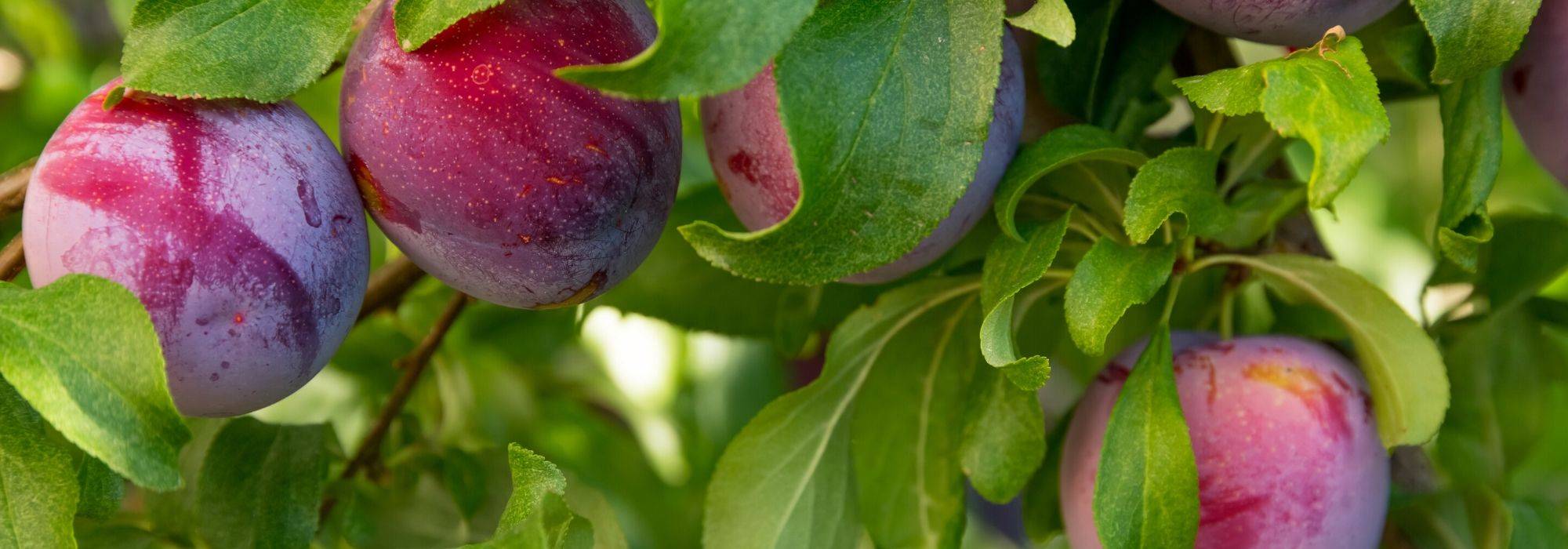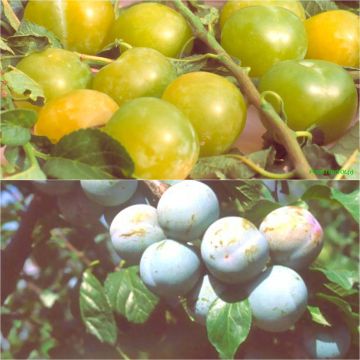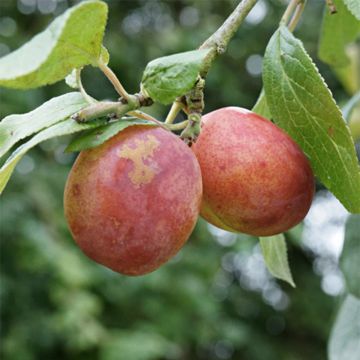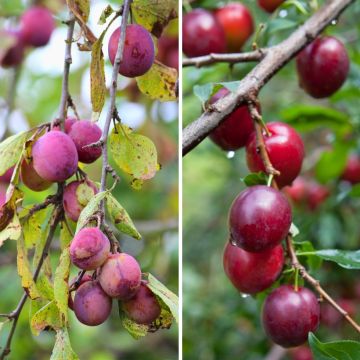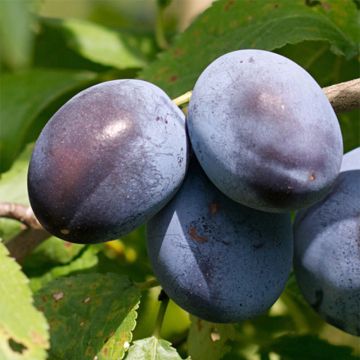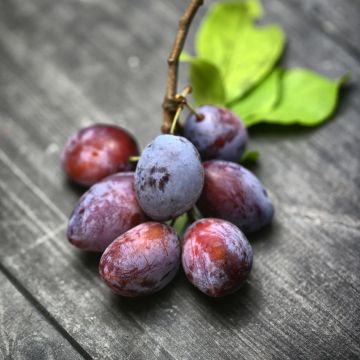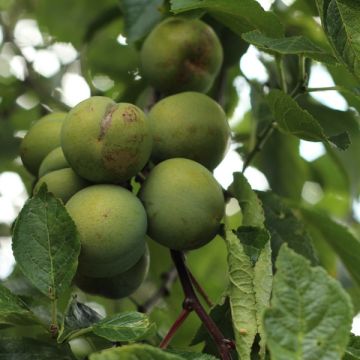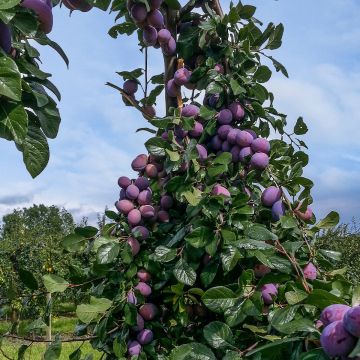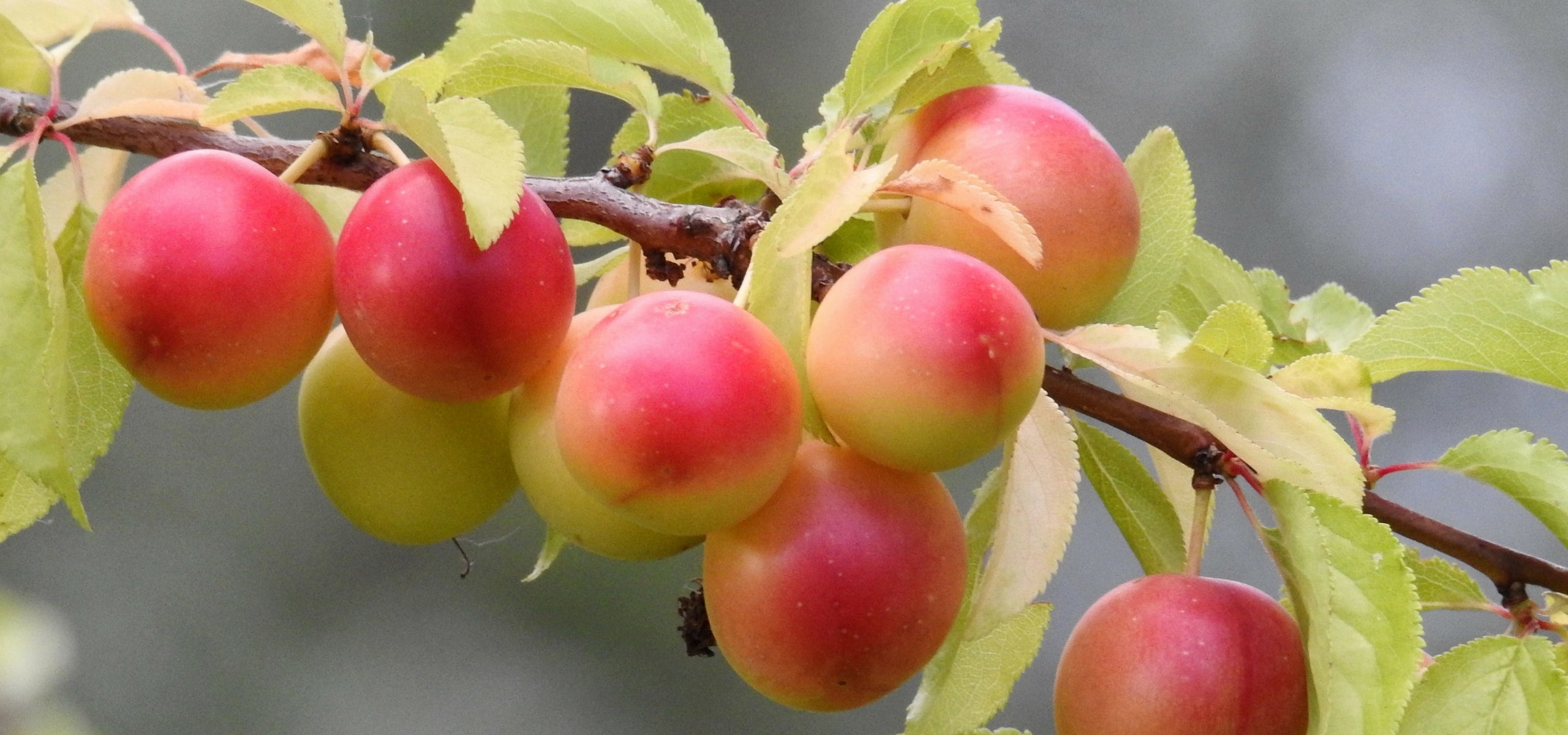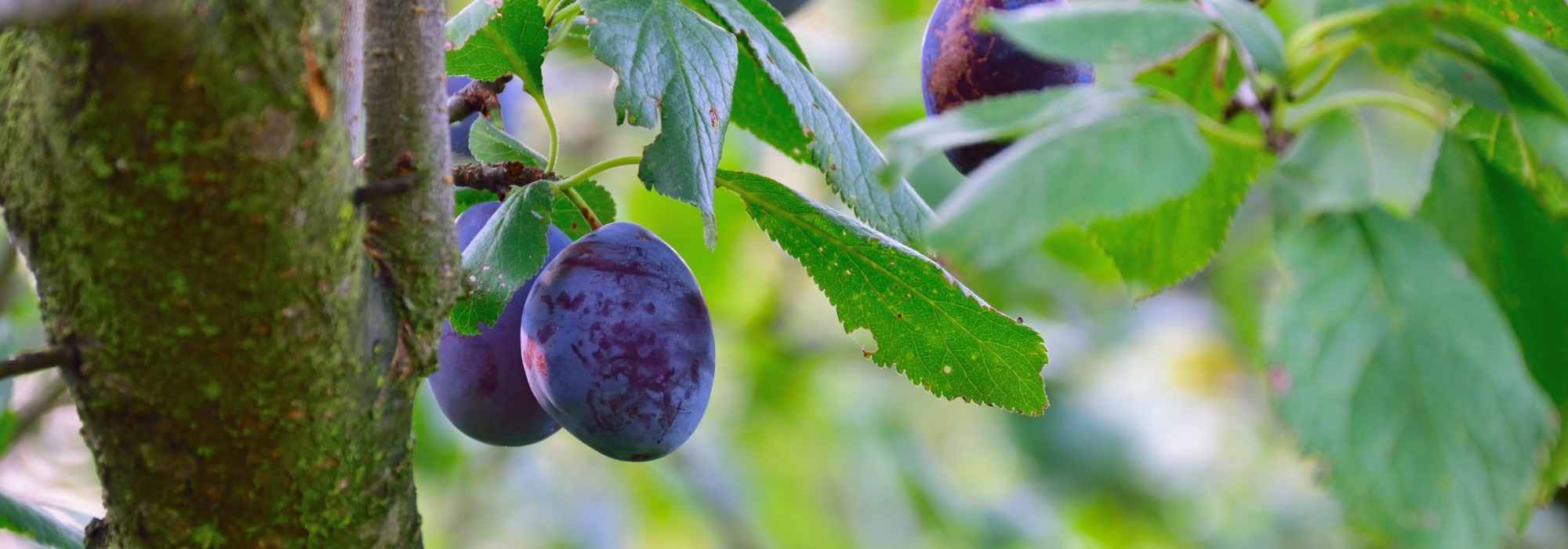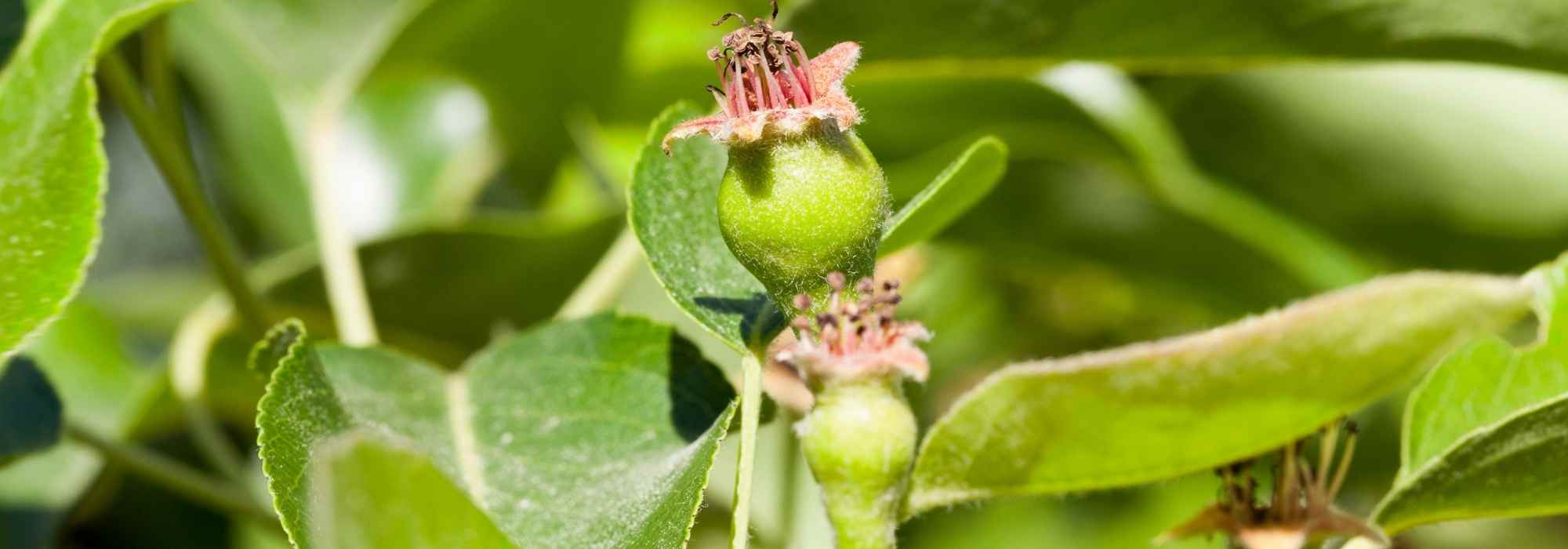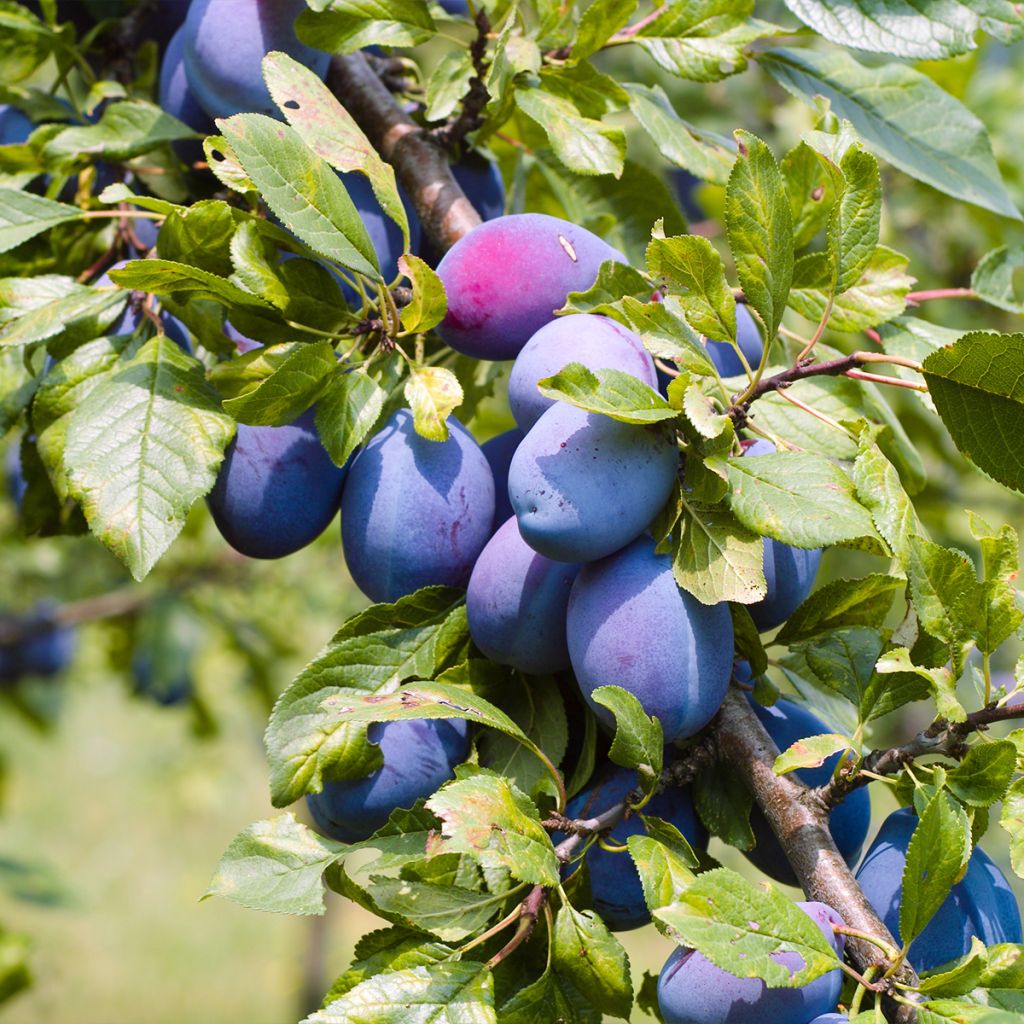

Prunus domestica Altesse Double - Common plum
Prunus domestica Altesse Double - Common plum
Prunus domestica Altesse Double
European plum, Common plum, Garden plum
Special offer!
Receive a €20 voucher for any order over €90 (excluding delivery costs, credit notes, and plastic-free options)!
1- Add your favorite plants to your cart.
2- Once you have reached €90, confirm your order (you can even choose the delivery date!).
3- As soon as your order is shipped, you will receive an email containing your voucher code, valid for 3 months (90 days).
Your voucher is unique and can only be used once, for any order with a minimum value of €20, excluding delivery costs.
Can be combined with other current offers, non-divisible and non-refundable.
Home or relay delivery (depending on size and destination)
Schedule delivery date,
and select date in basket
This plant carries a 6 months recovery warranty
More information
We guarantee the quality of our plants for a full growing cycle, and will replace at our expense any plant that fails to recover under normal climatic and planting conditions.

Description
The Prunus domestica Altesse Double (or Italian Plum) is a variety of plums with moderate vigour and late flowering. It produces elongated plums of dark blue-violet colour, suitable for harvesting from late August. Their flesh is firm, juicy, and sweet and can be consumed fresh in desserts or jams. Plant another variety nearby for better pollination, as Altesse Double is only partially self-fertile.
The Plum trees belong to the vast family of Rosaceae, which includes most of our temperate climate fruit trees (Apple trees, Pear trees, Apricot trees, Peach trees, Cherry trees, Quince trees...) as well as small fruits (Blackberries, Raspberry bushes, Strawberry plants). The Prunus genus is vast, counting over 300 species, both fruit-bearing (Almond trees, Peach trees...) and ornamental. The Prunus domestica is probably native to Asia Minor (Syria) and would have been introduced to Rome and many other species due to Roman conquests. According to some authors, its introduction to Europe is instead linked to the Crusades; who knows?
Altesse Double is a variety of Italian Plum that forms a small spreading tree, 4 to 6 metres (13 to 20 feet) tall and about 4 metres (13 feet) wide. This variety is characterized by late flowering, in April-May. It then bears clusters of white flowers with five petals, attracting bees. This Plum tree is only partially self-fertile, and the proximity of another variety will improve its pollination. Altesse Simple (Quetsche d'Alsace) is the most suitable for this. Once pollinated, the flowers form drupes during the summer, fleshy fruits with stones, commonly called plums. These have an elongated shape and are dark blue-violet with a characteristic bloom on these fruits. They ripen in late August and can be harvested. Their yellow flesh is quite firm and juicy, with a slight aroma, and they are pleasantly sweet. These fruits can be consumed fresh after harvesting and used in tarts or jams. Plums are refreshing fruits, relatively low in calories, and rich in vitamin E.
Hardy down to -20 °C, this variety grows in full sun, in ordinary soil, well-drained, neutral to limestone, and not too dry. It is an easy-to-grow tree, not demanding once well-established.
This Plum tree with moderate development will find its place in most gardens and can be the starting point for a small orchard. Pair it with an apple tree to enjoy fruits throughout autumn and an early pear tree, like William's Bon Chrétien, which produces fruits from August. If you lack space, consider small fruits like white currants like Blanka or red currants like Jonkheer van Tets. And why not a Goji berry like Sweet Lifeberry with its antioxidant-rich red berries?
Prunus domestica Altesse Double - Common plum in pictures
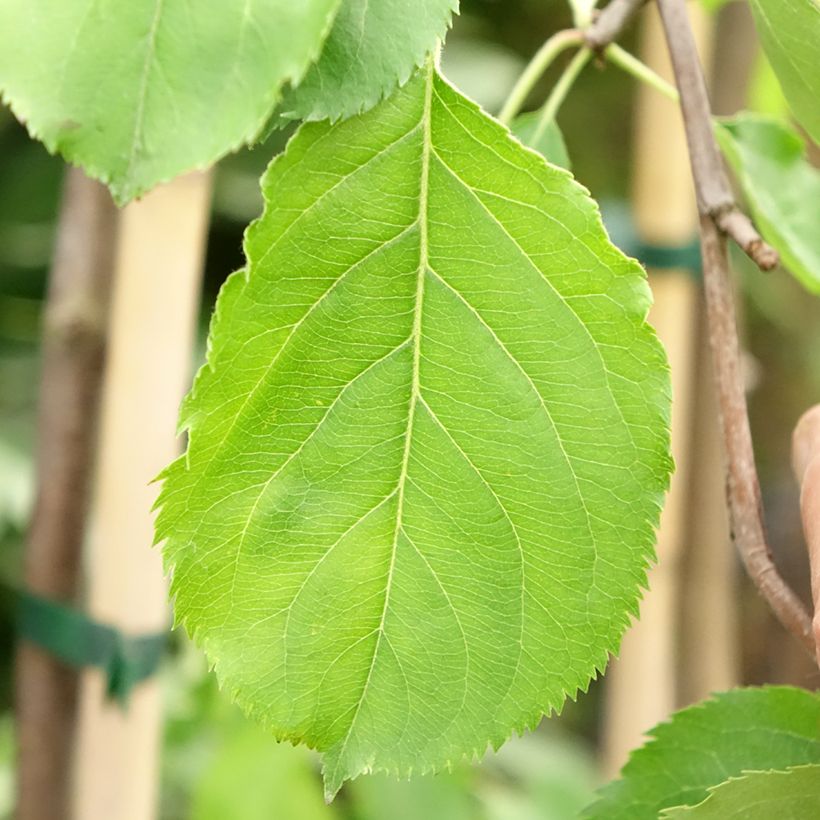

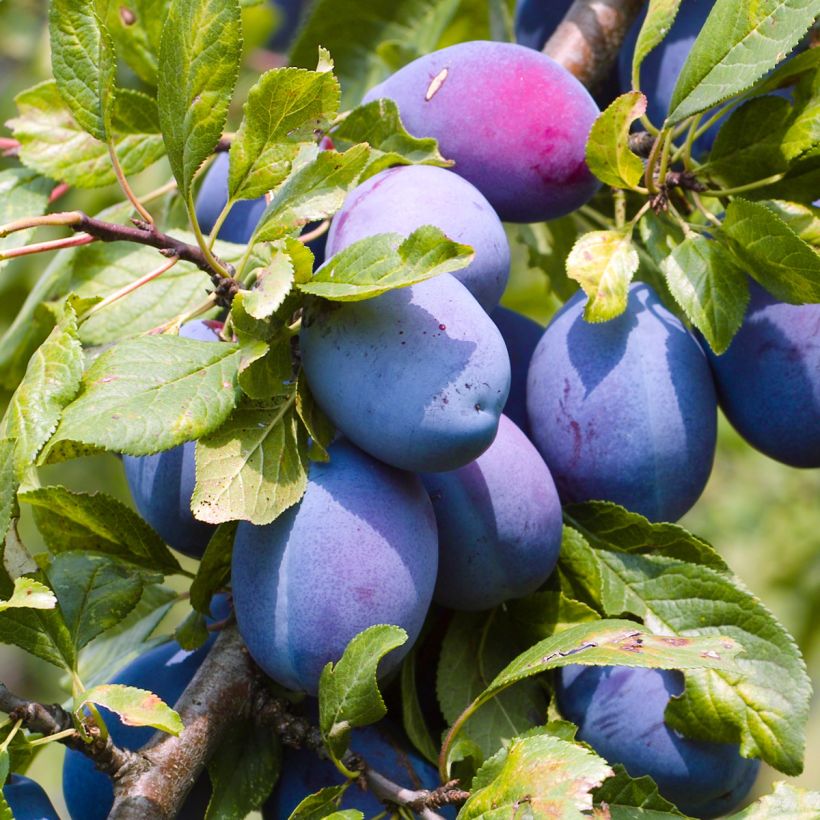

Plant habit
Fruit
Flowering
Foliage
Botanical data
Prunus
domestica
Altesse Double
Rosaceae
European plum, Common plum, Garden plum
Cultivar or hybrid
Other Plum Trees
View all →Planting and care
This Altesse Double Plum tree prefers deep clay-limestone soil that is not too dry. It can adapt to other types of soil, however, it is quite demanding in terms of sunlight. Hardy (up to about -20°C (-4°F)), it appreciates continental climates with distinct seasons.
Dig a planting hole of at least 50 cm (20in) on all sides and even more, as this tree likes deep soil. It also appreciates some humidity, so make sure to water it regularly in summer and autumn during the first few years. Once well rooted, it is a resilient and low-maintenance tree.
Planting period
Intended location
Care
Planting & care advice
This item has not been reviewed yet - be the first to leave a review about it.
Haven't found what you were looking for?
Hardiness is the lowest winter temperature a plant can endure without suffering serious damage or even dying. However, hardiness is affected by location (a sheltered area, such as a patio), protection (winter cover) and soil type (hardiness is improved by well-drained soil).

Photo Sharing Terms & Conditions
In order to encourage gardeners to interact and share their experiences, Promesse de fleurs offers various media enabling content to be uploaded onto its Site - in particular via the ‘Photo sharing’ module.
The User agrees to refrain from:
- Posting any content that is illegal, prejudicial, insulting, racist, inciteful to hatred, revisionist, contrary to public decency, that infringes on privacy or on the privacy rights of third parties, in particular the publicity rights of persons and goods, intellectual property rights, or the right to privacy.
- Submitting content on behalf of a third party;
- Impersonate the identity of a third party and/or publish any personal information about a third party;
In general, the User undertakes to refrain from any unethical behaviour.
All Content (in particular text, comments, files, images, photos, videos, creative works, etc.), which may be subject to property or intellectual property rights, image or other private rights, shall remain the property of the User, subject to the limited rights granted by the terms of the licence granted by Promesse de fleurs as stated below. Users are at liberty to publish or not to publish such Content on the Site, notably via the ‘Photo Sharing’ facility, and accept that this Content shall be made public and freely accessible, notably on the Internet.
Users further acknowledge, undertake to have ,and guarantee that they hold all necessary rights and permissions to publish such material on the Site, in particular with regard to the legislation in force pertaining to any privacy, property, intellectual property, image, or contractual rights, or rights of any other nature. By publishing such Content on the Site, Users acknowledge accepting full liability as publishers of the Content within the meaning of the law, and grant Promesse de fleurs, free of charge, an inclusive, worldwide licence for the said Content for the entire duration of its publication, including all reproduction, representation, up/downloading, displaying, performing, transmission, and storage rights.
Users also grant permission for their name to be linked to the Content and accept that this link may not always be made available.
By engaging in posting material, Users consent to their Content becoming automatically accessible on the Internet, in particular on other sites and/or blogs and/or web pages of the Promesse de fleurs site, including in particular social pages and the Promesse de fleurs catalogue.
Users may secure the removal of entrusted content free of charge by issuing a simple request via our contact form.
The flowering period indicated on our website applies to countries and regions located in USDA zone 8 (France, the United Kingdom, Ireland, the Netherlands, etc.)
It will vary according to where you live:
- In zones 9 to 10 (Italy, Spain, Greece, etc.), flowering will occur about 2 to 4 weeks earlier.
- In zones 6 to 7 (Germany, Poland, Slovenia, and lower mountainous regions), flowering will be delayed by 2 to 3 weeks.
- In zone 5 (Central Europe, Scandinavia), blooming will be delayed by 3 to 5 weeks.
In temperate climates, pruning of spring-flowering shrubs (forsythia, spireas, etc.) should be done just after flowering.
Pruning of summer-flowering shrubs (Indian Lilac, Perovskia, etc.) can be done in winter or spring.
In cold regions as well as with frost-sensitive plants, avoid pruning too early when severe frosts may still occur.
The planting period indicated on our website applies to countries and regions located in USDA zone 8 (France, United Kingdom, Ireland, Netherlands).
It will vary according to where you live:
- In Mediterranean zones (Marseille, Madrid, Milan, etc.), autumn and winter are the best planting periods.
- In continental zones (Strasbourg, Munich, Vienna, etc.), delay planting by 2 to 3 weeks in spring and bring it forward by 2 to 4 weeks in autumn.
- In mountainous regions (the Alps, Pyrenees, Carpathians, etc.), it is best to plant in late spring (May-June) or late summer (August-September).
The harvesting period indicated on our website applies to countries and regions in USDA zone 8 (France, England, Ireland, the Netherlands).
In colder areas (Scandinavia, Poland, Austria...) fruit and vegetable harvests are likely to be delayed by 3-4 weeks.
In warmer areas (Italy, Spain, Greece, etc.), harvesting will probably take place earlier, depending on weather conditions.
The sowing periods indicated on our website apply to countries and regions within USDA Zone 8 (France, UK, Ireland, Netherlands).
In colder areas (Scandinavia, Poland, Austria...), delay any outdoor sowing by 3-4 weeks, or sow under glass.
In warmer climes (Italy, Spain, Greece, etc.), bring outdoor sowing forward by a few weeks.






























